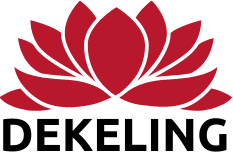During our Refuge Ceremony recently, people taking refuge for the first time did sets of three prostrations (bows). I mentioned that I’d say a little more about prostrations in a blog post.
To do a prostration, stand and face the object or person to whom you are prostrating. (For those who may be unable to stand, or who have other physical challenges regarding prostrations, please ask me for guidance and alternatives!)
First, create the mudra by putting your palms together as we might do in prayer—with the heels of the hands and fingertips touching, but leaving space between the palms, by curving them slightly. The palms should be approximately at the heart-center, in the middle of the chest between the breasts. The hands will be upright, but relaxed.
Be sure to insert the thumbs between the hands, by tucking the thumbs inside the palms. The hands in this mudra represent a lotus blossom that has not yet opened, but is about to bloom. The empty space between the palms represents the dharmakaya[1].
The use of the right and left hands represents skillful means and wisdom. By joining these two—skillful means and wisdom, the unity of which represents enlightenment—we create the auspicious conditions for the path to arise where it has not arisen, to never weaken, and to ever grow and flourish.
Next, raise the palms, still together, to the forehead; then to the level of the throat; then to the level of the heart. This signifies the qualities of the Buddha’s three places, and the purification of our obscurations of the three gates of body, speech, and mind.
Now slowly lower your body to the floor into a kneeling position by letting go of the mudra to gently land on the hands, palms open and fingers outspread against the floor, knees touching the floor. Stretch your body out fully, sliding your open hands forward as you go. When your body is flat against the floor, raise your hands in the mudra over the head, and then reverse the motion so that you rise, using your hands to push upward to a standing position. If you can rise without using your hands, this is also okay. When standing, repeat the placement of the hands at the forehead, throat, and heart center. When you are lowering down, and when you are pushing up, do not close your hands or make a fist—open them fully.
There are many types of prostrations, including the full ones just described [Tib. gyang chag], and half prostrations [Tib. kum chag], prostrations where only the five points of the hands, forehead, and two knees touch the ground. (The half-prostration is done kneeling, basically.)
One should try to do a correct form of the prostration, but even more important is the understanding that by doing the prostration, you are expressing respect, physically and mentally embodying the pure actions of body, speech, and mind. As you bow, you express respect for the teachings, for those who embody them, and for the virtuous qualities the teachings articulate. One might bow to the exalted sangha, as an expression of respect, appreciation, and interconnectedness.
You can see a video of our friend Lobsang at YoWangdu.com demonstrating the prostration style with which he is most familiar here: https://www.yowangdu.com/tibetan-buddhism/prostrations.html. At the end of his full prostration, he raises his hands slightly. I was taught to rejoin the palms and raise them above the head, bending the arm at the elbow—others teach that one turns the arms so that the forearms are upward, with palms open, and then to raise the forearm while the elbow rests on the floor, as if lifting something in the open palms. This brings the palms up on both sides of the head, which is facing the floor.
(Again, for those who may be unable to stand, or who have other physical challenges regarding prostrations, please ask me for guidance and alternatives.)
[1] The dharmakaya is sometimes described as the empty, unconditioned truth, into which illusion, ignorance, and any kind of concept, have never entered.
